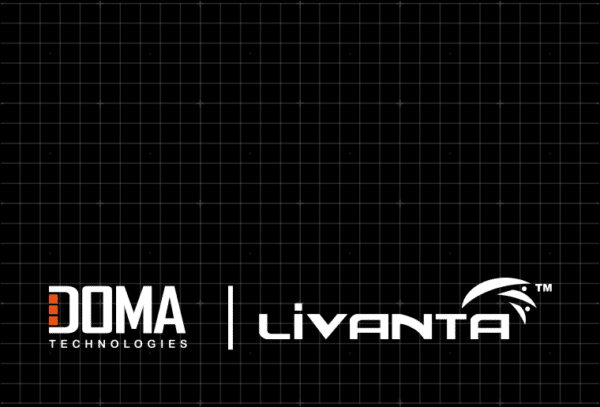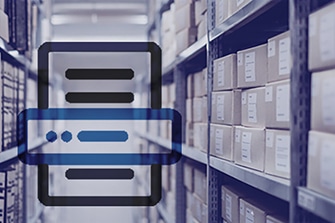How Digitizing Documents can Make a Difference During Your Move
April 07, 2020
As your business needs change you may find yourself in the process of seeking out new office space. Perhaps you’re looking to move into the heart of downtown to a more modern space or you’ve expanded your offerings and need a bigger building to house the new service branch. In either case, there are many important factors to consider during the relocation process such as the proximity to your customer base, cost, and square footage. In order to make the most of your relocation it may be time to take stock of some of your current business strategies. After all, a new space calls for a new, more efficient perspective.
Similarly, a move is the perfect time to step back and take a deep look at your records management strategy and consider digitizing your documents before the big move. There is already so much to consider with moving personnel, equipment, and office furniture, don’t let tons of paper hold you back.
It’s easy to overlook the role paper filing plays in a move, but there is a hidden cost to ignoring it. There are four primary concerns when planning to relocate your paper filing system:, business interruptions, physical space, cost, and security/compliance.
U.S. businesses waste $8 billion annually just managing paper.
Interrupting Your Daily Operations
CHALLENGE: Keeping your business running during a move can be especially challenging, and the need to refer to physical records does not make it any easier. Customers are not typically sympathetic to the difficulties of a move and if you cannot provide the service or information they need quickly they will move on to a competitor. If you’re relocation is across state lines the delay in service can be even more severe as valuable business resources are “held hostage” in storage or in moving vehicles for the duration of the process.
SOLUTION: Determine what information you need to continue normal operations and ensure those records are either digitized or moved first. One major advantage of document digitization is that some providers can allow you real time access to documents as they are scanned. By prioritizing the data and documents you need to keep business flowing, you can minimize business interruptions.
Each year, the amount of data businesses create increases by more than 65 percent.
Physical Space
CHALLENGE: The average filing cabinet takes up 8.5 square feet of floor space. This includes both the cabinet and the space required to open and close the drawers. That may not seem like much, but when you have even modest archives of paper documents the space adds up. Anyone who has ever tried to move a box full of books knows that inch for inch, paper is one of the heaviest, and most difficult items to move. Using the figure above, for every 10 filing cabinets you move to your new location you displace a potential worker in square footage (1).
SOLUTION: Reducing paper filing will benefit your business regardless of whether you are moving into a larger space or downsizing. If your workforce is growing reducing paper leaves your more room to accommodate that expansion. Likewise, don’t let paper hold you back from a smaller, but better situated office. With so many businesses flocking to busy urban centers, office space is at a premium. If your paper records aren’t making your more than what they cost to store or what a human worker could earn you in the same space, they are a liability.
Some estimates state that finding a lost document will cost a company $122 on average, and around $220 to reproduce.
Cost
CHALLENGE: The cost of paper filing is often an overlooked expense. After all, there are few things less interesting than a single dusty filing cabinet at the back of an office. However, every filing cabinet you maintain costs you money in square footage and human labor. Here are some thought experiments to help you get a handle on how much paper is costing you:
One Human Resources worker spends .5 hours a day locating, copying, and distributing paper files at your company. Assuming they make $15 an hour and work the standard 261 days in a year you will spend about:
$1,958 a year in labor
Taking this a step further, let’s imagine your office is located in Washington D.C. and that same worker must search through 15 different filing cabinets in your archive. With an average cost of $60/square foot for Class B office space those filing cabinets cost you:
$7,650 a year in space
This is a total of $9,608 that might be better spent elsewhere. This doesn’t even include the cost of paper, printing, or additional labor required to locate or replace a lost/misfiled document.
If you plan to move your 15 hypothetical cabinets to a new location you may incur further costs due to the logistics of transporting them, A full, four drawer filing cabinet can weight around 440 pounds (2). The fifteen cabinets from our example would weigh 6,650 pounds collectively. If those same cabinets are heavy-duty fireproof cabinets the total weight could skyrocket up to 21,000 pounds. That’s almost double what a standard 26 foot moving truck can hold. Due to their weight it’s possible you will be required to remove and box all of the contents separately before a move further increasing both your moving costs and the risk of information/data loss.
SOLUTION: Digitizing records completely eliminates the costs associated with moving and storage and greatly reduces the labor required for locating and disseminating records. Adopting a data and document workflow that incorporates the Cloud can be a good, long-term step towards more efficient, and cost effective records management.
How Much is Paper Filing Costing You in Rent?
Before you pack your records up for relocation find out what it costs you every year to store those records. This calculator allows you to determine how much rent you pay each year for paper filing space. This does not consider the additional cost of the labor required to organize or search for documents, nor the material costs for printing and filing.
I know how much my office rent is per square foot (per year):
I would like an average based on the cost of office space for my state (MD, VA, DC, NC):
According to Forrester Research, 25 percent of breaches occurred because of a “malicious insider,” and 36 percent were caused by employee mistakes. (3)
Security & Compliance
CHALLENGE: If your business deals with sensitive information, a relocation can put that valuable data at risk. According the U.S. Department of Transportation 5,900 consumers filed moving fraud complaints with Federal Motor Carrier Safety Administration (FMCSA) in 2018. Paper records can be easily lost, damaged, or compromised during a move. This may seem like the least of your worries, but it only takes the loss of a few key documents to create a breech of trust with your customers. Protecting valuable personally identifiable information (PII), personal health information (PHI), or financial documentation is a challenge when you don’t control the chain of custody.
SOLUTION: The best defense is to minimize the amount of paper you need to move by digitizing permanent records whenever possible and securely shredding anything you don’t need. Additionally, digital records can be further protected by adding user permissions and back end reporting to track changes and access.
Sensitive information that must remain in paper format should be audited before the move. Without taking stock of what you currently have it’s almost impossible to know if anything has gone missing.
Conclusion
Paper has value in business, and it’s not typically possible to go completely paper free. However, every filing cabinet you digitize reduces your carbon footprint, improves information access, and saves you valuable business resources, primarily labor, space, & money. As you plan office relocation be sure to consider how paper makes an impact on your business process. It may be tempting to just move your records and “deal with them later” but an office move is a prime time for exploring how full-service digitization can minimize the stress of relocation.
How DOMA can help with your Records Relocation
Digitization Made Simple
Document digitization paired with an electronic content management (ECM) system like DOMA DX can address all of the moving challenges in this article via our document relocation services. Instead of packing and moving all of your paper filing on your own, allow DOMA to offer end-to-end digitization. Our highly trained staff and GPS tracked vehicles make no stops between your pick up site and our secure conversion warehouse. After intake our conversion team scans documents directly to the Cloud for instant access, ensuring your valuable information remains accessible. Finally, digital records can be returned in a non-proprietary format or stored in our cloud software. Physical records can then be moved to your new location, stored off-site, or securely destroyed.
Beyond Scanning
By utilizing our flexible Cloud Solutions DOMA can help your organization figure out what is right for you. We offer a combination of private and public cloud options to make sure your data is secure. At DOMA all our Cloud processing happens in the highly secure Amazon Web Services Cloud environment. Our security best practices incorporate AWS’s IT infrastructure; augmenting our compliance with a variety of IT security standards. We also offer our customizable Content Services Platform (DX Software) to facilitate any document management needs your organization may have.
About DOMA- Powered by Tech, Driven by People
DOMA Technologies (DOMA) is a software development and digital transformation company whose mission is to change customer lives by lightening their workload through faster and more targeted access to their data. Since 2000, our team of 200+ experts has helped businesses navigate all aspects of the digital world. We are a dedicated strategic partner for the federal government and private sector clients at every stage of their unique digital transformation journey.

Author:
Danielle Wethington
Director of Communications
Paper Solutions
Learn more about DOMA’s Data and Document Management Solutions
Recent News

Humanizing Healthcare

Reducing Improper Payments

Beyond the Merge: Alex Feliciano on Transforming Federal Healthcare

